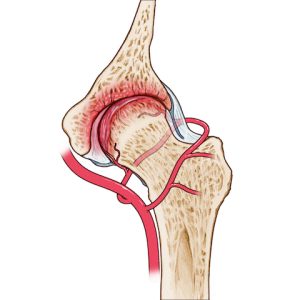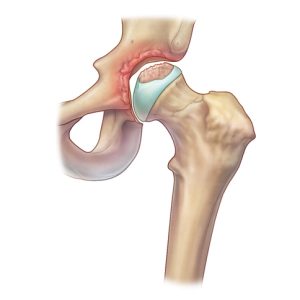Introduction to Avascular Necrosis
Avascular necrosis (AVN) of the femoral head is a serious medical condition that occurs due to the disruption of blood supply to the bone tissue in the hip joint. This lack of blood flow leads to the death of bone cells, eventually causing the bone to collapse. AVN, also known as osteonecrosis or aseptic necrosis, primarily affects the hip joint but can also occur in other joints such as the knee, shoulder, and ankle.

Understanding the Causes
The exact cause of AVN is not always clear, but several factors can contribute to its development. One of the most common causes is the long-term use of corticosteroid medications, which can impair blood flow to the bones. Other risk factors include trauma to the joint, excessive alcohol consumption, blood clotting disorders, and certain medical conditions like sickle cell disease and lupus. Understanding these risk factors is crucial in diagnosing and managing AVN effectively.

Recognizing Symptoms and Diagnosis
Early diagnosis of AVN is essential for preventing further damage to the hip joint. Patients with AVN may experience a gradual onset of hip pain that worsens with activity and improves with rest. As the condition progresses, limping, limited range of motion, and joint stiffness may become more noticeable.
To diagnose AVN, imaging tests such as X-rays, MRI scans, and bone scans are often used to assess the extent of bone damage and identify areas of necrosis. Blood tests may also be conducted to rule out other potential causes of joint pain and dysfunction.
Treatment Options
Treatment for AVN depends on the stage of the condition and the extent of bone damage. In the early stages, conservative measures such as pain management, physical therapy, and activity modification may be recommended to alleviate symptoms and slow down the progression of the disease.
In more advanced cases where the femoral head has collapsed or severe joint damage has occurred, surgical interventions may be necessary. These can include core decompression, bone grafting, osteotomy, and joint replacement surgery to restore function and relieve pain.

Lifestyle Modifications and Prevention
Patients with AVN can also benefit from lifestyle modifications to reduce stress on the hip joint and improve overall joint health. This includes maintaining a healthy weight, avoiding excessive alcohol consumption, quitting smoking, and engaging in regular low-impact exercises to strengthen the muscles around the hip joint.
Prevention of AVN involves early detection and management of risk factors such as corticosteroid use and underlying medical conditions. Patients who are at risk for AVN should work closely with their healthcare providers to monitor their bone health and take proactive steps to prevent complications.
Conclusion
In conclusion, avascular necrosis of the femoral head is a complex condition that requires a comprehensive approach to diagnosis and treatment. By understanding the causes, recognizing symptoms, and exploring treatment options, healthcare providers can effectively manage AVN and improve outcomes for patients.
